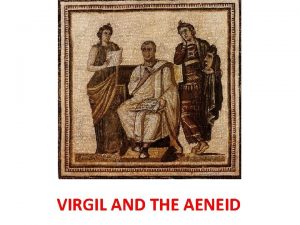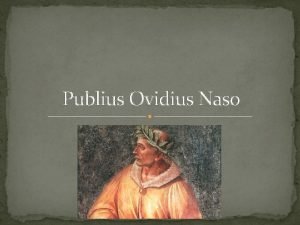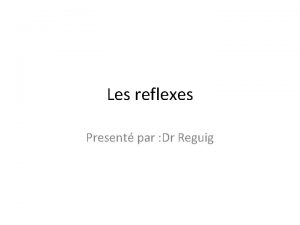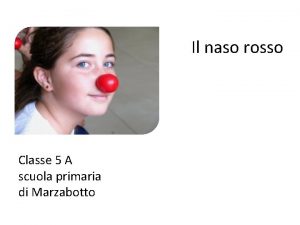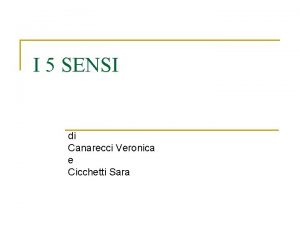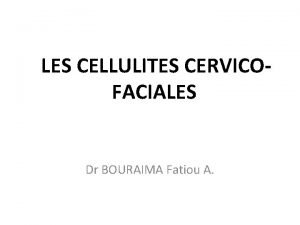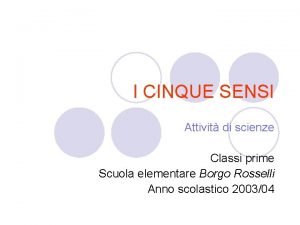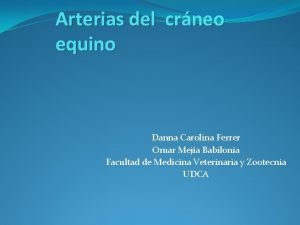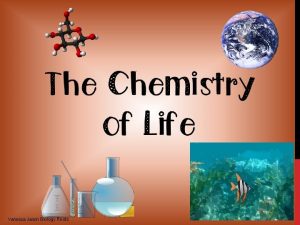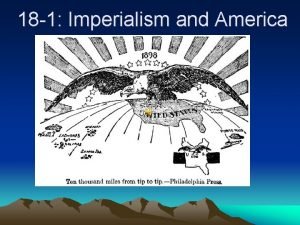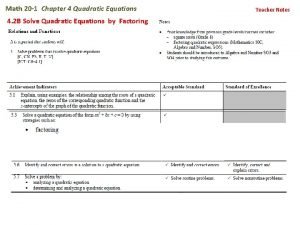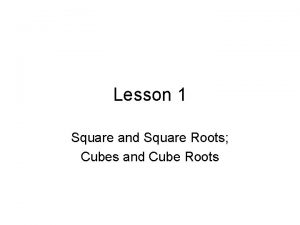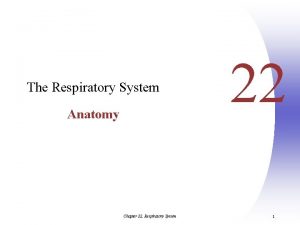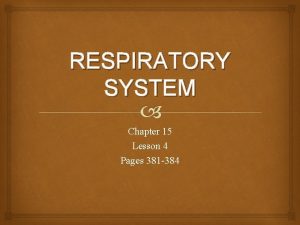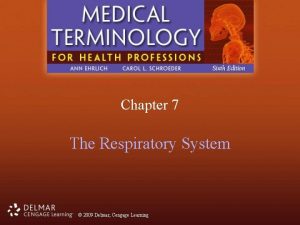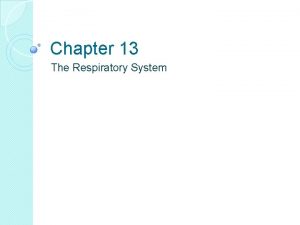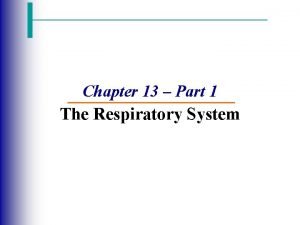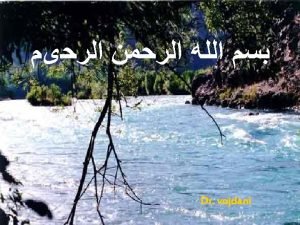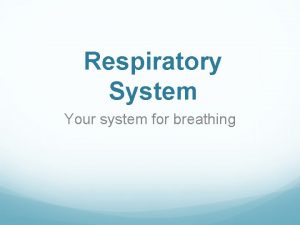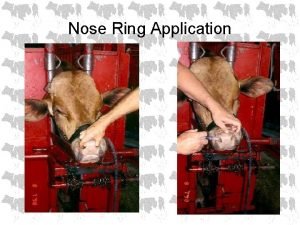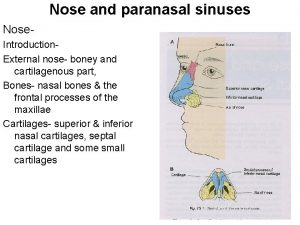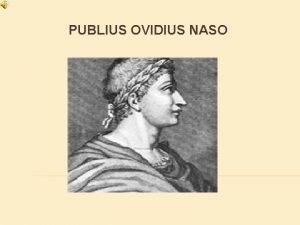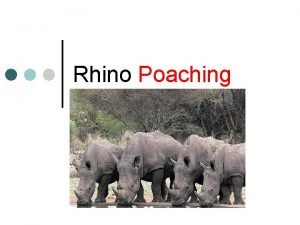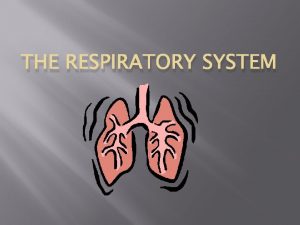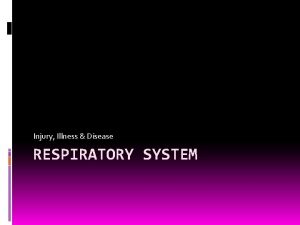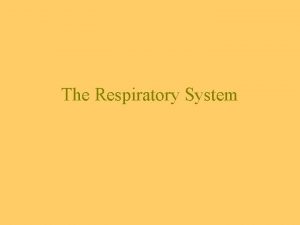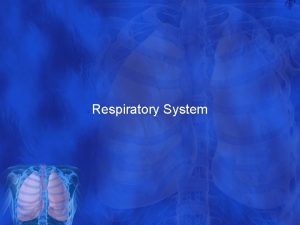Chapter 10 Respiratory System ROOTS Naso rhino nose





























- Slides: 29

Chapter 10 Respiratory System

ROOTS • • • Naso, rhino- nose Oro- mouth Stetho, thoraco- chest Bronchi, broncho- bronchus Bronchiolo- bronchiolus Laryngo- larynx Pharyngo- pharynx Pleura- pleural membranes of the lungs Pneuma, pneumo, pneumato, pneumono, pulmo- lungs Tracheo- trachea

Components of the Respiratory System • • Nose Pharynx Larynx Trachea Bronchi Lungs Thorax Diaphragm

THE RESPIRATORY SYSTEM AND CIRCULATORY SYSTEM DEPEND ON ONE ANOTHER

BREATHING • _______/________: Inhaled oxygen fills the lungs where the RBCs pick it up and bring it to the cells of the body via the pumping action of the heart. • _______/________: Oxygen is exchanged for carbon dioxide which is transported back to the lungs by the blood and exhaled from the body.


Oxygen/Carbon Dioxide Exchange

Capillary Beds

O 2 CO 2 Exchange

NOSE • Entrance for _____, exit for ____. • Nose and respiratory tract are lined with ______________ mucosa which filters out dust and foreign matter. • Nose _____ and _______ the entering air • Mucosa has ______ receptors for _______. (_____________________) • _______ are the openings to the airways (nostrils) • _________ AND _____________ vary with species – _____ has very pliable and expandable nostrils (no _______ breathing)

Gettin’ Nosey

PHARYNX – (THROAT) • Communicates with the _____ chambers, _______________ tubes and ______. • Upper portion is attached to base of ____, lower portion unites with _________. • 3 parts: ___________(nose) ___________(mouth) ___________ (larynx) • Passageway for _____ and ______


EUSTACHIAN TUBE (pharyngotympanic tube) Serves to equalize pressure on both sides of tympanic membrane.

LARYNX • “_______” and passageway for air • Located “______” (caudal to) pharynx • _________Cartilaginous structure that prevents _______ from entering the ______ during ________. • Sound is produced by air passing through the ______ (vocal folds & space) at the _________ causing vibrations. • Phonation • _____= Organ in birds that produces sound


BIRDS - SYRINX Birds: SYRINX (trachea > bronchi)

TRACHEA • “______” • Tube of _____ muscle and C-shaped rings of ________. – Rings help to prevent ______ • Stretches from ______ to _______. – lined with ______ membrane.

Collapsing Trachea

BRONCHI • The C-shaped rings continue from the trachea and become ______ rings as they enter the _____. • Trachea divides into the – _______ on the right and left sides as they enter the lungs • site of division is called the ________ • Lined with _______ mucous membrane – Further divide into the ______ bronchi which branch into – ______(which further branch into even smaller bronchioles) – Aveolar ducts terminate into ___________: walls composed of MANY ALVEOLI (________, __________-lined spaces) • ______ and ____ are exchanged in the _____sacs • No rings in alveolar ducts, sacs, or alveoli


LUNGS • Primary structures of ________ system – Base lies on cranial surface of _________. – Contain _______ (most species: _____ Left = cranial, caudal lobes; ____ Right = cranial, middle, caudal, accessory) – Very light and spongy consistency – Paired; contain hundreds of millions of _____ and ________. – Function = ___________

Lobes of the Lungs

LUNGS • Encased in ____________ (a serous membrane) • Thoracic cavity lined with ______ pleura. – Membranes reduces _______ during respiration – Space between is _______ cavity or _______ space


THORAX • ______ cavity; ____ cavity • ________ membranes divide it into right and left pleural cavities. • ___________ • Area between the lungs • Contains the heart, thymus, esophagus, trachea, bronchi, nerves, arteries, veins, lymph vessels and lymph nodes

MEDIASTINUM

DIAPHRAGM • Thin sheet of ______ muscle that separates the _______ and _________cavities. • Dome-shaped when ______; flat when ___________. • Attaches to ______ vertebrae, lower ribs, and _______. • Most important muscle of respiration – Inspiration = contracted, flattened, lowered – Expiration = relaxed, raised

DIAPHRAGM
 What does the nose represent in the nose by gogol
What does the nose represent in the nose by gogol Nasal bridge
Nasal bridge Conducting zone respiratory
Conducting zone respiratory Respiratory digestive and circulatory system
Respiratory digestive and circulatory system Publius vergilius naso
Publius vergilius naso Publius vergilius naso
Publius vergilius naso Reflexe cremasterien
Reflexe cremasterien Naso scuola primaria
Naso scuola primaria Naso olfatto
Naso olfatto Proiezione submento vertice
Proiezione submento vertice Cellulite cervico facial
Cellulite cervico facial Il naso e l'olfatto scuola primaria
Il naso e l'olfatto scuola primaria Cursus honorum arbeitsblatt
Cursus honorum arbeitsblatt Bolsa gutural
Bolsa gutural Vanessa jason biology roots www.biology-roots.com
Vanessa jason biology roots www.biology-roots.com Estimating square roots guided notes
Estimating square roots guided notes Lesson 3 existence and uniqueness
Lesson 3 existence and uniqueness Economic roots of american imperialism
Economic roots of american imperialism Sum of the roots and product of the roots formula
Sum of the roots and product of the roots formula List of cube numbers
List of cube numbers Tiny air sacs at the end of the bronchioles
Tiny air sacs at the end of the bronchioles Circulatory system and respiratory system work together
Circulatory system and respiratory system work together Chapter 7 cengage
Chapter 7 cengage Respiratory tree divisions
Respiratory tree divisions Perfusion respiratory
Perfusion respiratory Chapter 15 respiratory system
Chapter 15 respiratory system Chapter 7 the respiratory system labeling exercises
Chapter 7 the respiratory system labeling exercises Chapter 34 section 1 the circulatory system
Chapter 34 section 1 the circulatory system Chapter 13 the respiratory system
Chapter 13 the respiratory system Chapter 13 respiratory system figure 13-4
Chapter 13 respiratory system figure 13-4




